

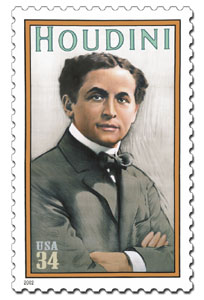 Harry
Houdini - Page two - Previous
Houdini Page
Harry
Houdini - Page two - Previous
Houdini Page
(1874 - 1926)
A long campaign by a small group of dedicated magicians sulminated in
the issuance of this amazing postage stamp by the United States Postal
Service.

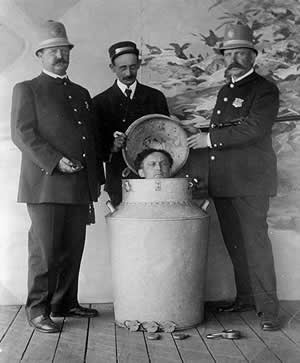
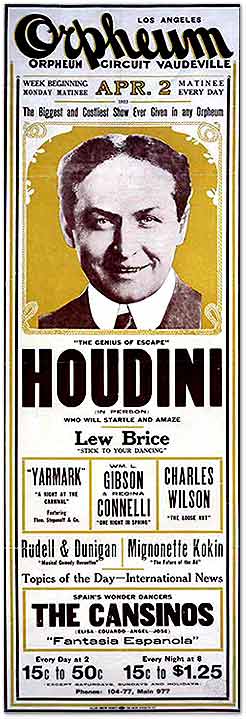
After almost three decades of public performances, Houdini eventually found a new and powerful way to reach people: the motion picture. He made his first film, a serial called "The Master Mystery," in 1918, just as the movie business was about to take off. Although his acting was wooden and screen magic held none of the mystery of live magic, Houdini became one of Hollywood's first action heroes, and his movies delighted audiences around the world. Now in his mid-forties and physically worn-out, he was thrilled to be able to perform an escape once and have it preserved forever. And in typical fashion, Houdini jumped into the new medium with both feet: not content just being a star, he started his own production company and several other movie-related ventures, all of which lost money.
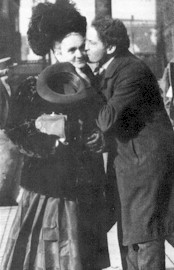 (At
left: Houdini and his beloved mother)
(At
left: Houdini and his beloved mother)
Another great passion of Houdini's emerged in the early '20s, when he became a leading critic of the Spiritualist movement sweeping Europe and America in the wake of World War I. Perhaps embarrassed by his lack of formal education, Houdini had always worked hard to educate himself; his great passion was the history of magic, and he amassed one of the greatest collections of such material in the world. Thus when Spiritualist mediums gained considerable attention by claiming to be in touch with the spirit world, the world's most famous illusionist felt compelled to reveal them for what they were: highly skilled performers.
Houdini's crusade, which he approached with characteristic passion, led to two particularly revealing episodes. One was his friendship with English author Sir Arthur Conan Doyle, a leading advocate of Spiritualism. Although Houdini was eager to remain friends with the noted man of letters, their differing views eventually led to a falling out. The other episode was his very public battle with the most noted medium of the day, Mina Crandon, a.k.a. "Margery," the wife of a prominent Boston surgeon. As part of a committee organized by "Scientific American" magazine, Houdini helped expose Margery as a fraud after a series of combative seances. He even published a forty-page illustrated pamphlet entitled "Houdini Exposes the tricks used by the Boston Medium 'Margery'" at his own expense. As generous as he was with family and friends, Houdini made an implacable foe.
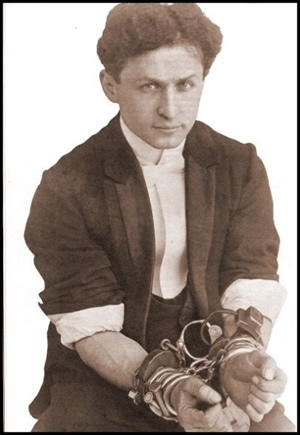 Houdini
began 1926 on a high note, reaching the height of success with his own
one-man show on Broadway. The two and a half hour "HOUDINI"
featured a bit of everything that had made him a legend since the dime
museum days: small-scale illusions, blockbuster escapes, and a Spiritualism
expose. The show was such a success he took it on the road.
Houdini
began 1926 on a high note, reaching the height of success with his own
one-man show on Broadway. The two and a half hour "HOUDINI"
featured a bit of everything that had made him a legend since the dime
museum days: small-scale illusions, blockbuster escapes, and a Spiritualism
expose. The show was such a success he took it on the road.
But during a stay
in Montreal in October, Houdini was assaulted by a young man in his dressing
room. The stomach blows -- which he had invited as a test of his legendary
strength -- aggravated a case of appendicitis, and he soon became seriously
ill. In a final display of stamina and willpower, Houdini 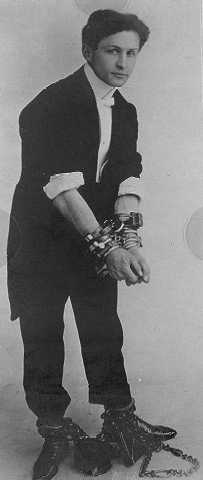 performed
the next day and again in Detroit. His appendix was removed on October
25th, but the delay had allowed an infection to set in, and he died in
Detroit on Halloween.
performed
the next day and again in Detroit. His appendix was removed on October
25th, but the delay had allowed an infection to set in, and he died in
Detroit on Halloween.
Banner headlines, long obituaries, and a crowded public funeral in New York marked Houdini's passing. These were but a few of the signs that the world knew it had lost one of the most original and beloved entertainers of all time.
Special thanks to our friend Sydney Radner for help in preparing this tribute and for some of the photos and posters.
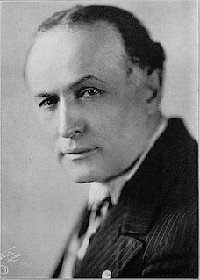
|
The
Guide - abracaDACRI
- school - mall
- books - organizations
- contact us - hall
of fame - news
©2000 - 2009 MagicWebChannel.com |